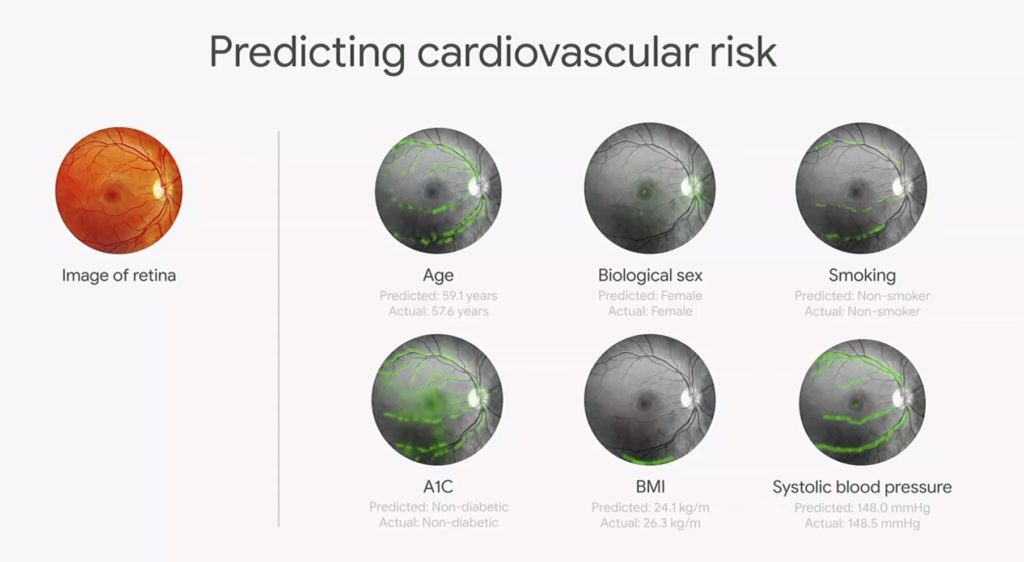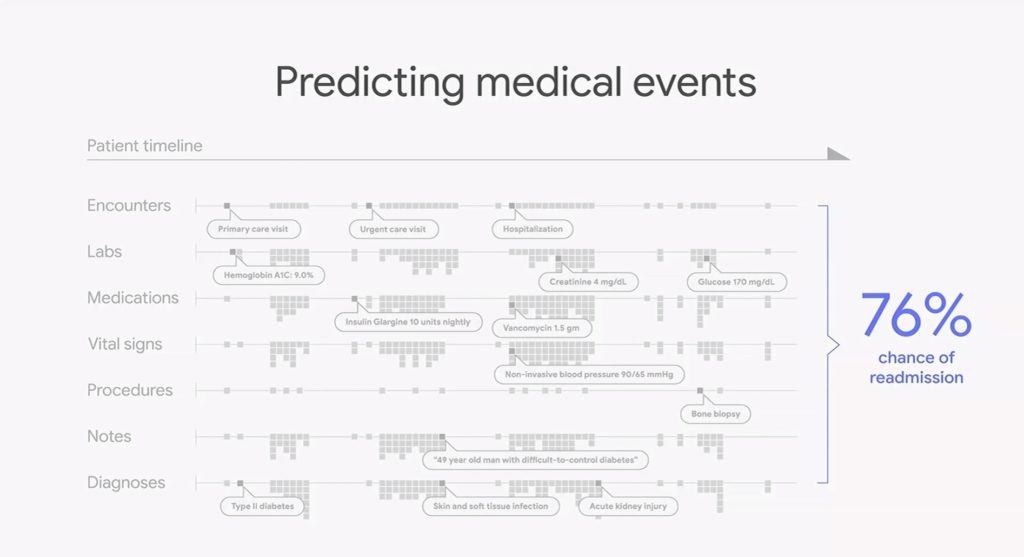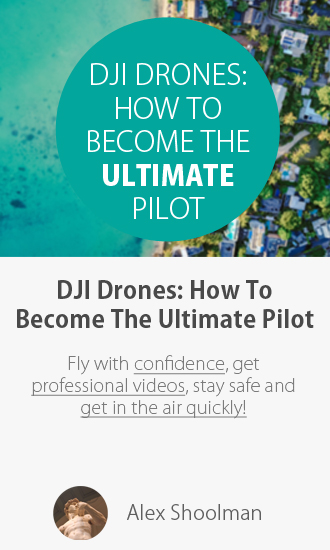Diabetic Retinopathy is something we’ve already covered in detail in our recent piece where we saw the very first AI system officially approved by the FDA for use in the real world. For those who haven’t read it though:
Diabetic retinopathy occurs when high blood sugar levels lead to damaging the retina blood vessels at the back of the eye. This then leads to patients loosing their vision. With it being the most common cause of vision loss for the 30 million+ Americans with diabetes it’s a serious issue.
The new AI system called IDx-DR was able to detect a “greater than a mild level of the eye disease diabetic retinopathy in adults who have diabetes” according to the FDA.
Now though Google is taking it even further. In India they’re using it to help detect the risk of you having an adverse cardiovascular event… over the next 5 years.

They can also use the same scan of your retina to predict many other things like your age, sex, whether you’re a smoker or diabetic, what your BMI is and even your blood pressure. They’re looking at the scan as potentially being a new form of test to replace other more expensive and invasive ones that are normally used to get similar results.
This scan together with many other factors over a period of time can even help them predict the likelihood that you will be readmitted to hospital. The AI takes into account thousands of readings and bits of information and compares them with its database of previous examples to produce the likely probability of you being readmitted.

This information is extremely useful to doctors as they can then provide much better care and prepare for whatever the predicted outcome is. You can have a look at the announcement and get more info in their Keynote below (starting at the right point).
The medical industry is one where AI can make a huge impact. While most of the AI systems aren’t fully up to the extremely high standards that healthcare demands, they can often be used as aids to the doctors or nurses. To check decisions, point out potentially missed features of scans, combine and analyse complex cross domain information and more.
It is also becoming a hugely important part of medical aid overseas in countries that aren’t rich enough to have fully staffed and funded hospitals everywhere. Allowing people with little or even no training to test for and diagnose many different conditions that might have otherwise gone completely missed.
While healthcare always has a very cautious and slow approach to any new technology roll out the new programs, abilities and products are starting to push through now. And with huge companies like Google, IBM and more all working hard at the problems it’s fantastic to watch their progress and see everyone in the world have their lives improved by it.
The benefits include: 1) How to get those silky smooth videos that everyone loves to watch, even if you're new 2) How to fly your drone, from taking off to the most advanced flight modes 3) Clear outlines of how to fly with step-by-step instructional demonstrations and more 4) Why flying indoors often results in new pilots crashing their drone 5) What other great 3rd party apps are out there to get the most out of your drone 6) A huge mistake many pilots make when storing their drone in the car and how to avoid it 7) How to do all of these things whilst flying safely and within your countries laws.





0 Comments